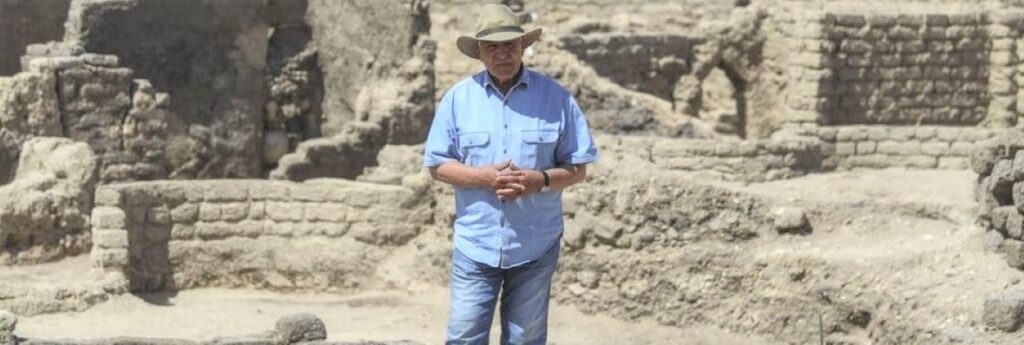A recently found “lost” Pharaonic city in the southern province of Luxor is being hailed as “the most important discovery” since the tomb of Tutankhamun was unearthed in Egypt’s Valley of the Kings nearly a hundred years ago.
Egypt’s best-known archaeologist Zahi Hawass says that archaeologists found brick houses, artifacts, and tools at the site of the 3,000-year-old lost city, which dates back to Amenhotep III of the 18th dynasty, whose reign is considered a golden era for ancient Egypt.
“This is really a large city that was lost… The inscription that found inside here says that this city was called: ‘The dazzling Aten,”’ says Hawass.
Archeologists started excavating in the area last year, searching for the mortuary temple of boy king Tutankhamun. However, within weeks they found mud brick formations that eventually turned out to be a well-preserved large city.
City walls and even rooms filled with ovens, storage pottery, and utensils used in daily life are said to be present. Archeologists also found human remains.
“We found three major districts, one for administration, one for the workmen to sleep, one for the industry and (an) area for dried meat,” says Hawass, who adds that he believes the city is “the most important discovery” since the tomb of Tutankhamun was unearthed nearly fully intact in 1922.
The newly unearthed city is located between the temple of King Rameses III and the colossi of Amenhotep III on the west bank of the Nile in Luxor. The city continued to be used by Amenhotep III’s grandson Tutankhamun, and then his successor King Ay.
Some mud bricks bear the seal of King Amenhotep III’s cartouche, or name insignia.
Amenhotep III, who ruled ancient Egypt between 1391 B.C. and 1353 B.C., built the main portions of the Luxor and Karnak temples in the ancient town of Thebes.
Egypt has sought publicity for its archaeological discoveries in the hopes of reviving its tourism sector, which was badly hit by the turmoil following the 2011 uprising, and now the coronavirus pandemic.
The announcement of the discovery came a few days after Egypt moved 22 of its prized royal mummies in a gala parade to their new resting place – the newly opened National Museum of Egyptian Civilization in Cairo.

